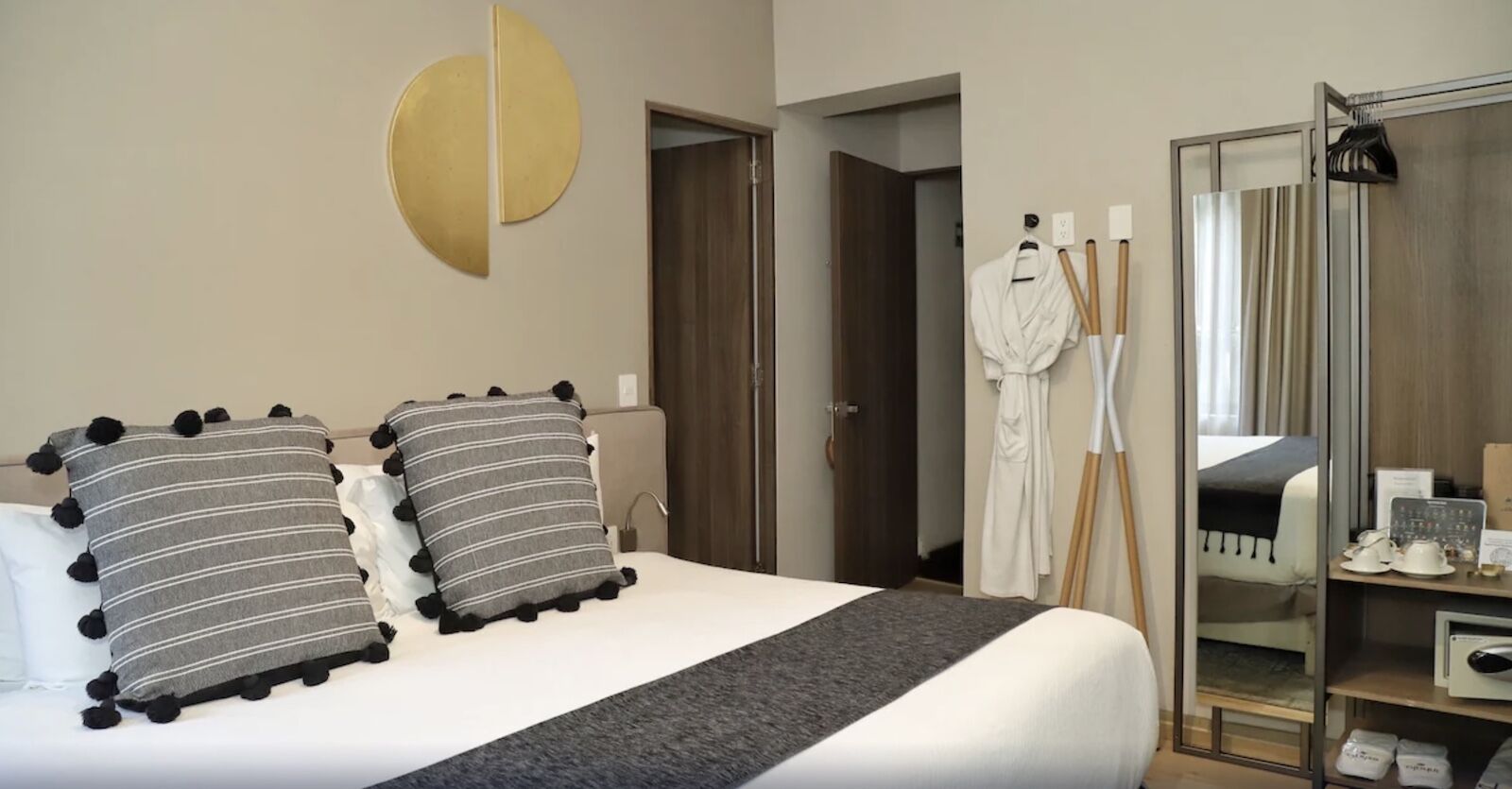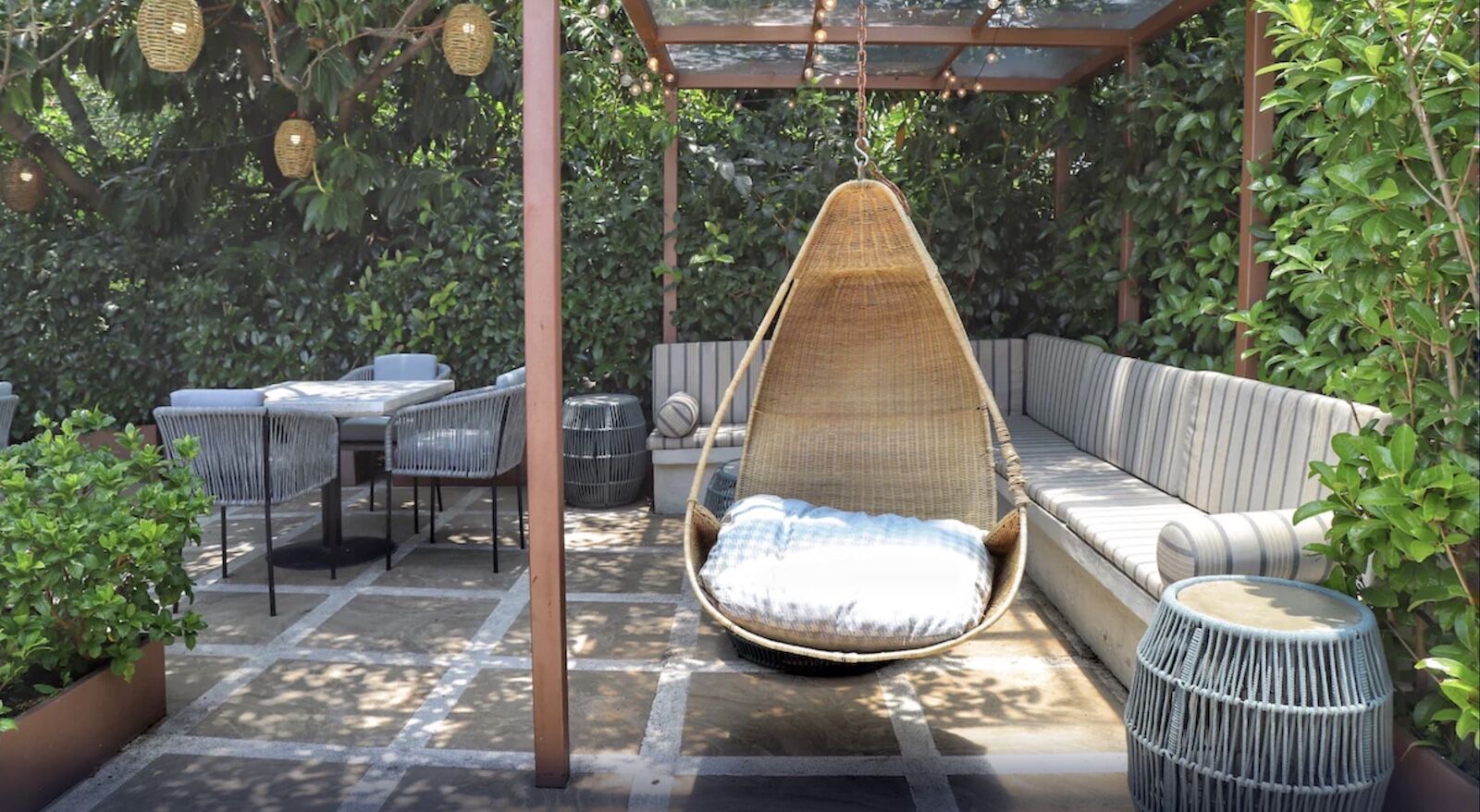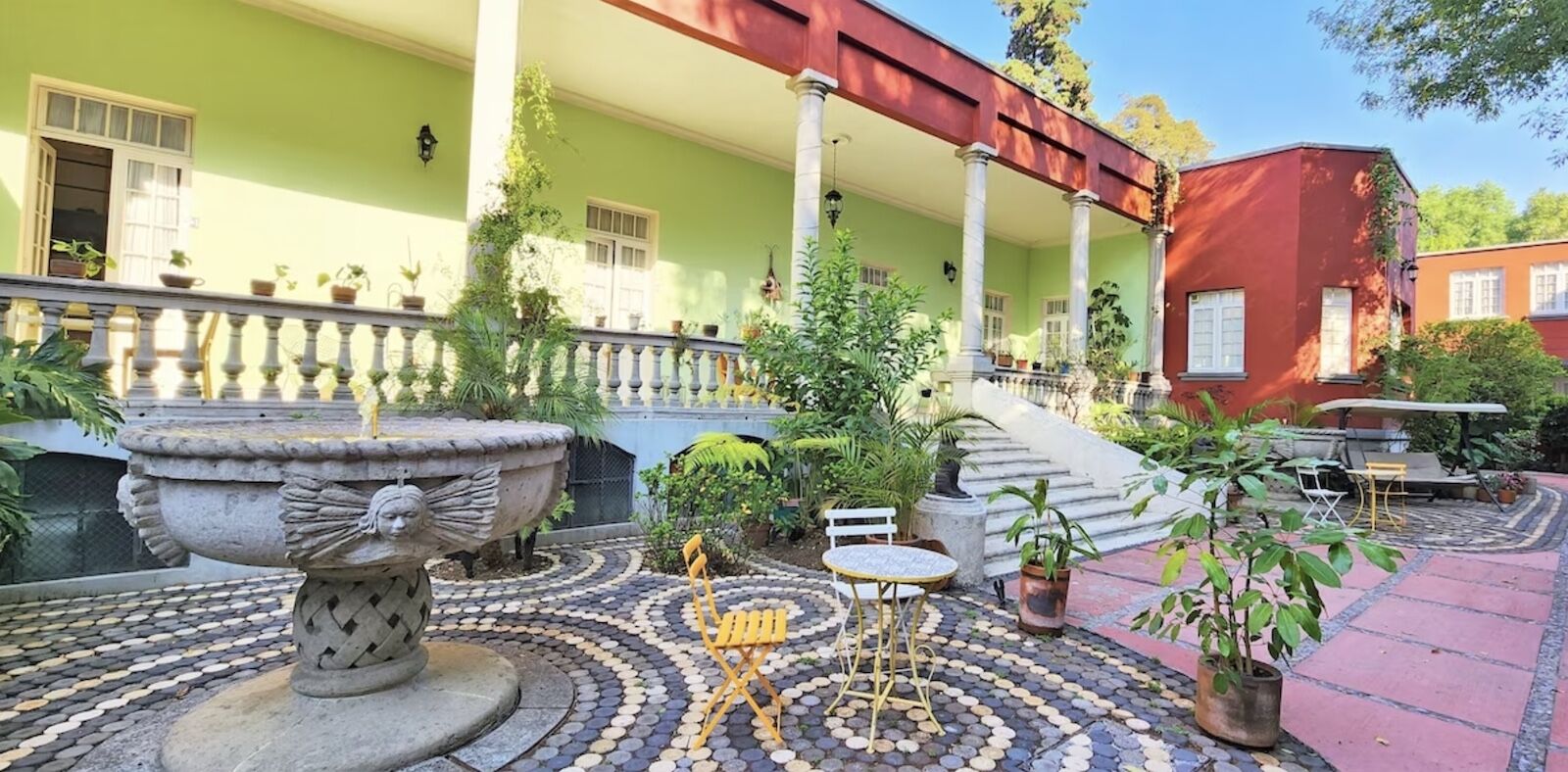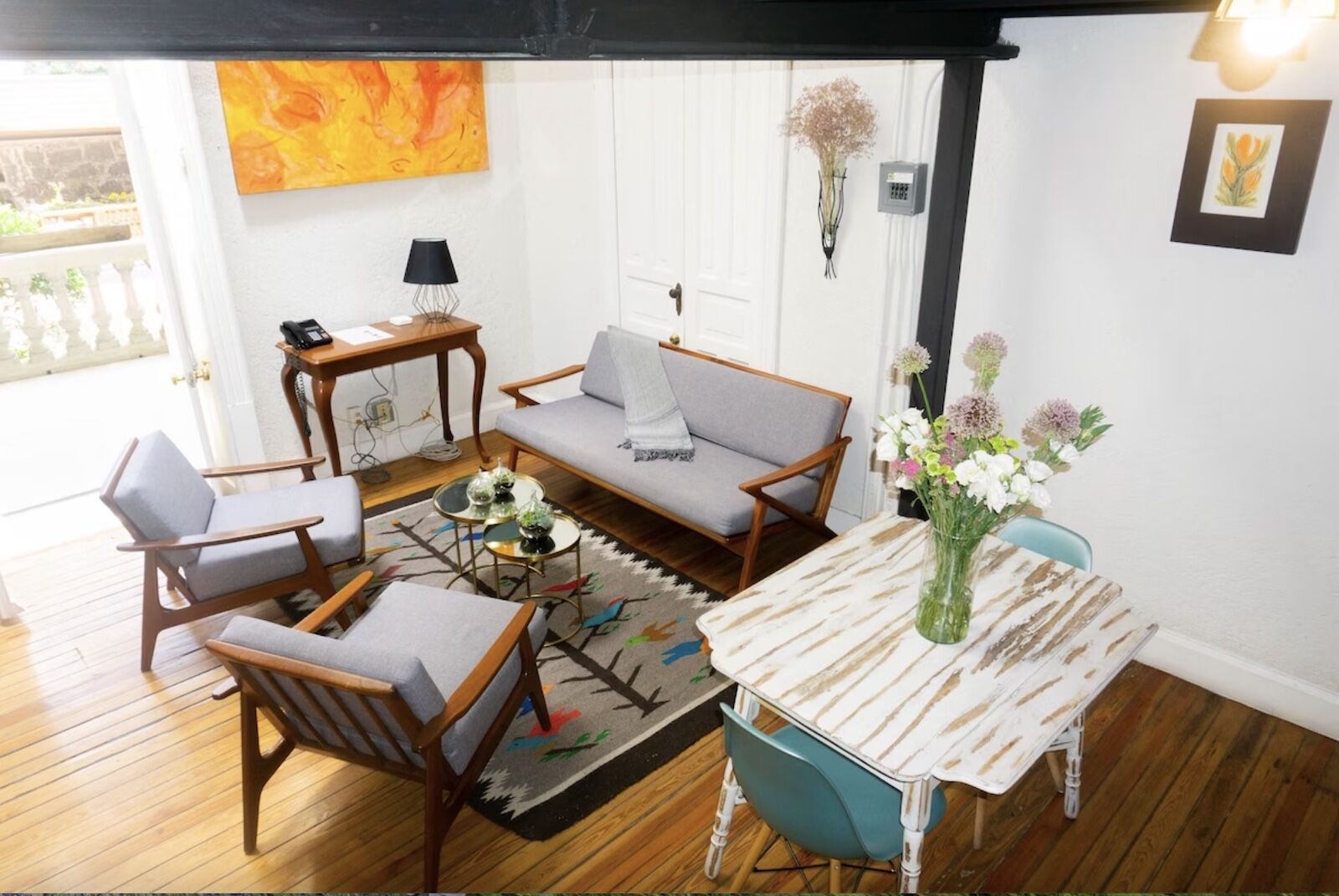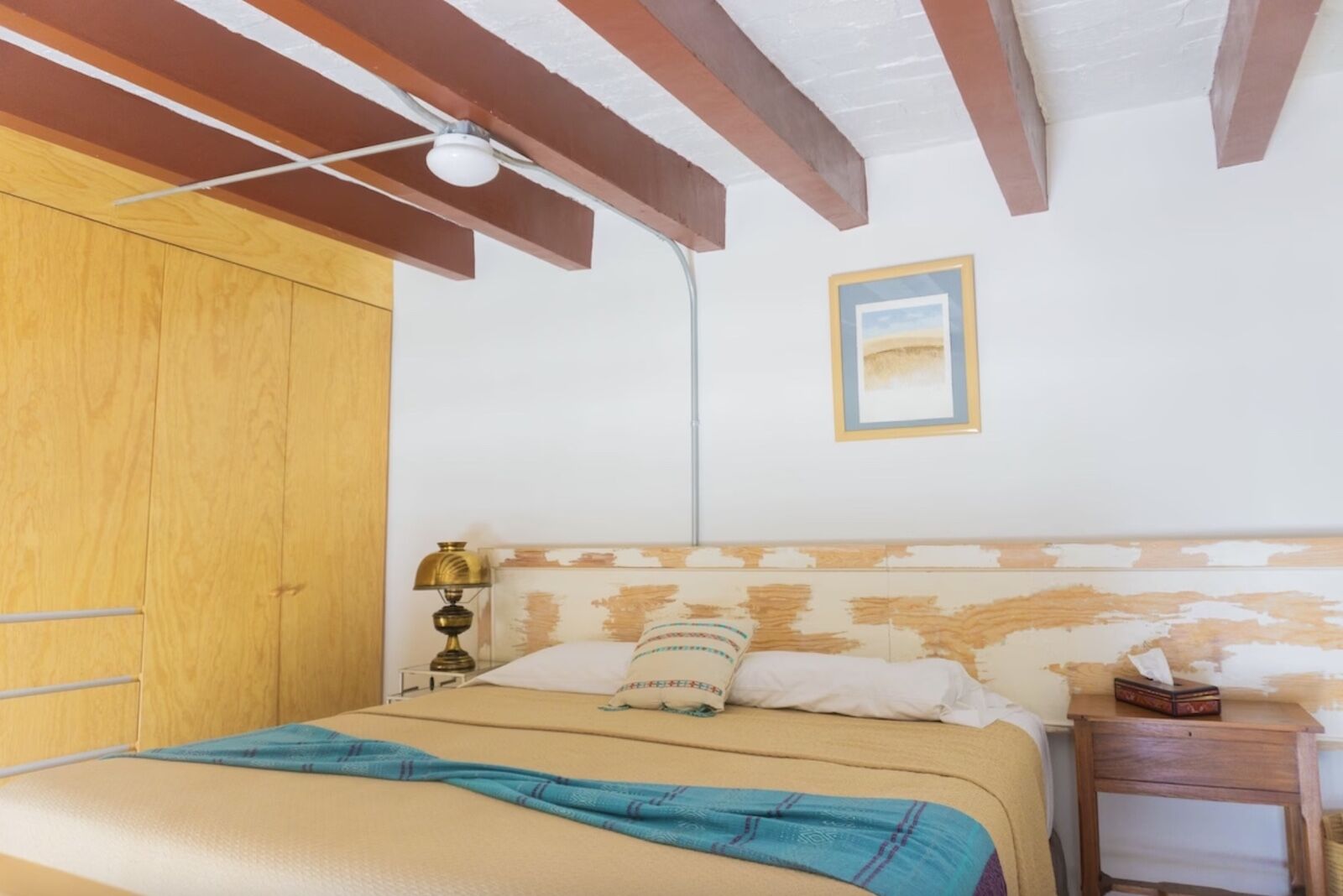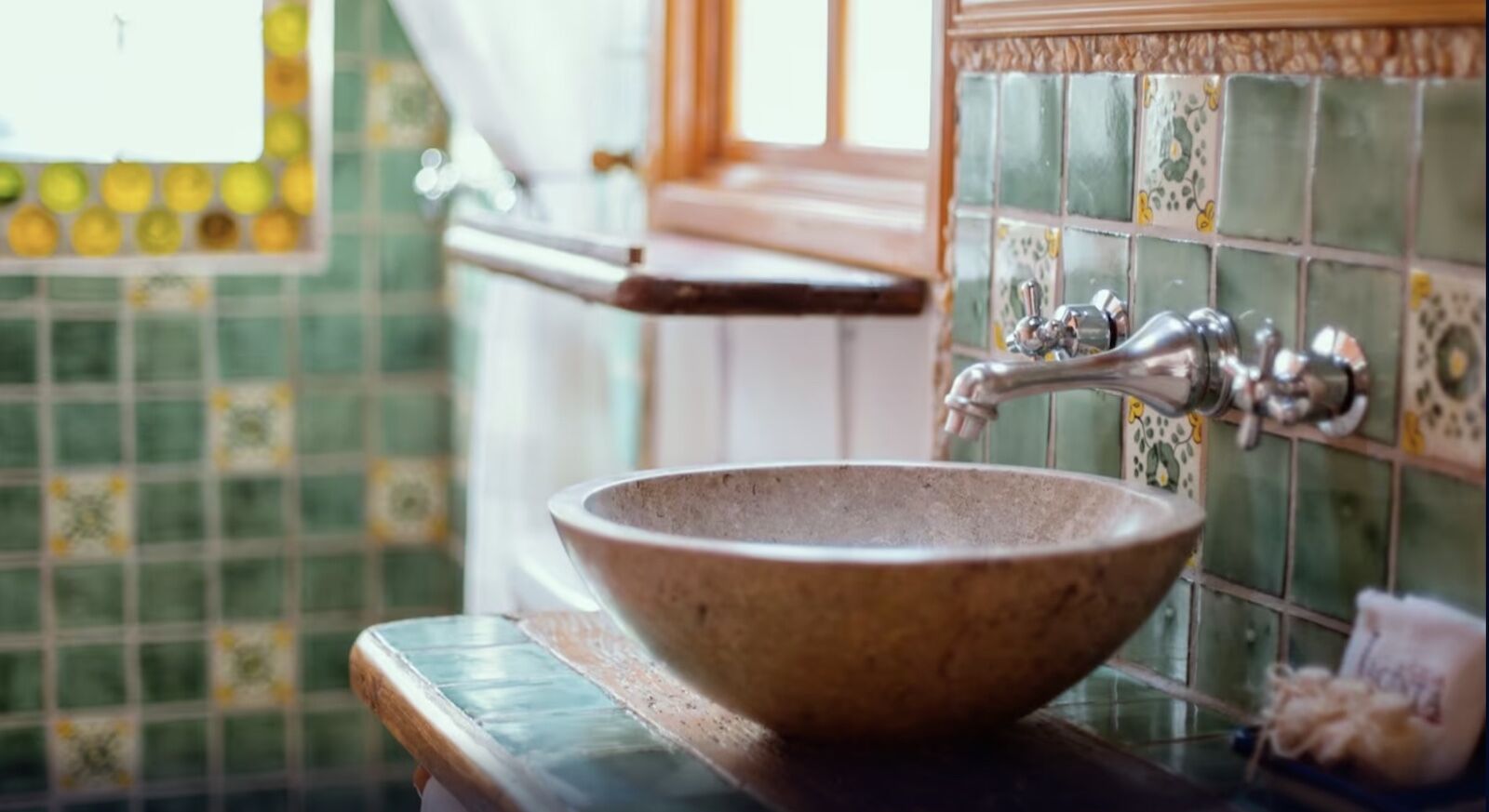One of the most celebrated painters in history and a feminist icon, Frida Kahlo has her own museum in Mexico City: the Frida Kahlo Museum, otherwise known as La Casa Azul (The Blue House). La Casa Azul is not just any building, it is the bright cobalt blue house where the artist was born, grew up, and spent most of her life until her death at age 47 in 1954. According to Kahlo and her husband Diego Rivera’s wishes, a few years after her passing, La Casa Azul was transformed into a museum where her paintings, personal objects, furniture, folk art, clothing, etc. are displayed for the enjoyment of all those who are fascinated by Kahlo’s work and life.
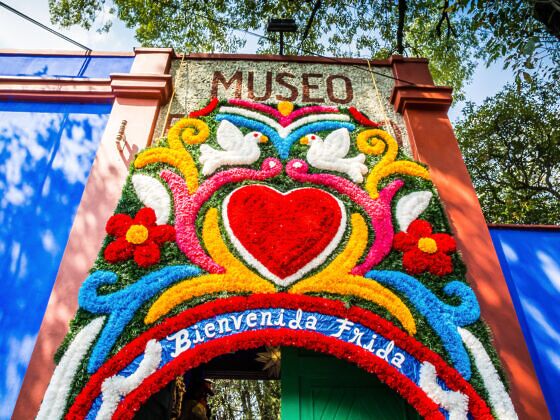

The House Where Frida Kahlo Was Born (and Died) Is Now an Extraordinary Museum
- Who was Frida Kahlo?
- Where is the Frida Kahlo Museum?
- How do I get to the Frida Kahlo Museum in Mexico City?
- How much does the Frida Kahlo Museum cost?
- How long does it take to visit the Frida Kahlo Museum?
- Why is the Frida Kahlo Museum Famous?
- Aside from the Frida Kahlo Museum, where can I see Frida Kahlo’s paintings in Mexico City?
- Hotels near the Frida Kahlo Museum in Mexico City
Who was Frida Kahlo?
Frida Kahlo is a highly celebrated Mexican surrealist painter who lived during the first half of the 20th century (1907-1954). Poor health during her childhood and a tragic bus accident at the age of 18 led Kahlo to experience severe and life-long physical and emotional pain, recurrently depicted in her art. Famous for her self-portraits, such as “Henry Ford Hospital,” created in 1932, where she depicts her second miscarriage, and “The Two Fridas,” painted after her divorce in 1939, Kahlo did not hold back from painting the reality of her suffering with full-body casts, blood, nakedness, etc.
Kahlo’s marriage to famous Mexican painter Diego Rivera was as unusual as it was tumultuous and liberated for the times — they lived and worked apart; infidelity was commonplace; they separated several times; and the couple divorced (1939) and remarried (1940).
Kahlo’s eccentric style, now often imitated, was a celebration of her Mexican identity, as well as a reflection of the tragedies she endured. She wore traditional colorful and embroidered blouses, shawls, and skirts, as well as large pieces of jewelry. It is often said that Kahlo’s long skirts were a way for her to hide the consequences of the polio she contracted at age six — the disease affected the shape of her legs and her gait.
Praised by some of the world’s most recognized artists such as Picasso, Chagall, and more, Kahlo had a successful career during which she exhibited her unique work in the US and Mexico and received commissions from the Mexican government, among others. Today, on the international stage, her work is arguably better known than that of her husband’s.
Kahlo passed away from illness as an acclaimed artist at the age of 47.
Where is the Frida Kahlo Museum?
La Casa Azul is located in the neighborhood of Coyoacán in Mexico City. Coyoacán is a charming and historic area of the city known for its beautiful colonial architecture, colorful streets, and lively cultural scene.
La Casa Azul is less than 10 minutes away on foot from another famous house museum: Leon Trotsky’s House Museum.
The exact address of the museum is: Londres 247, Del Carmen, Coyoacán, 04100 Ciudad de México, CDMX, Mexico
How do I get to the Frida Kahlo Museum in Mexico City?
Hop into the line three train of the STC metro and stop at the Coyoacán station, the closest metro station to La Casa Azul. From there it’s a 20-minute walk to the museum. The Line three of the STC metro is colored light green on the Mexico City metro map.
The Turibus, Mexico City’s version of the Hop On Hop Off bus, has a Coyoacán circuit that stops at the museum.
How much does the Frida Kahlo Museum cost?
General admission for foreign nationals is $14.30 (250 MXN) from Monday to Friday, and $15.45 (270 MXN) on weekends. Discounts are available for students, seniors, and children. People with disabilities and children aged six or under enter for free.
Those who want to take no-flash photographs inside the museum must purchase a permit for $1.70 (30 MXN).
Note that you can only purchase timed-entry tickets and that they are only sold online. You cannot purchase your admission at the door. Timed-entry tickets sell out very fast so book it well in advance.
Your ticket to the Frida Kahlo Museum also gives you access to the Diego Rivera-Anahuacalli Museum located three miles away. If you don’t want to walk for one hour to get from one museum to the next, take the Fridabus from La Casa Azul for just $9.15 (160 MXN) for adults and $4.60 (80 MXN) for children under the age of eight. Fridabus tickets are only available for purchase at La Casa Azul.
How long does it take to visit the Frida Kahlo Museum?
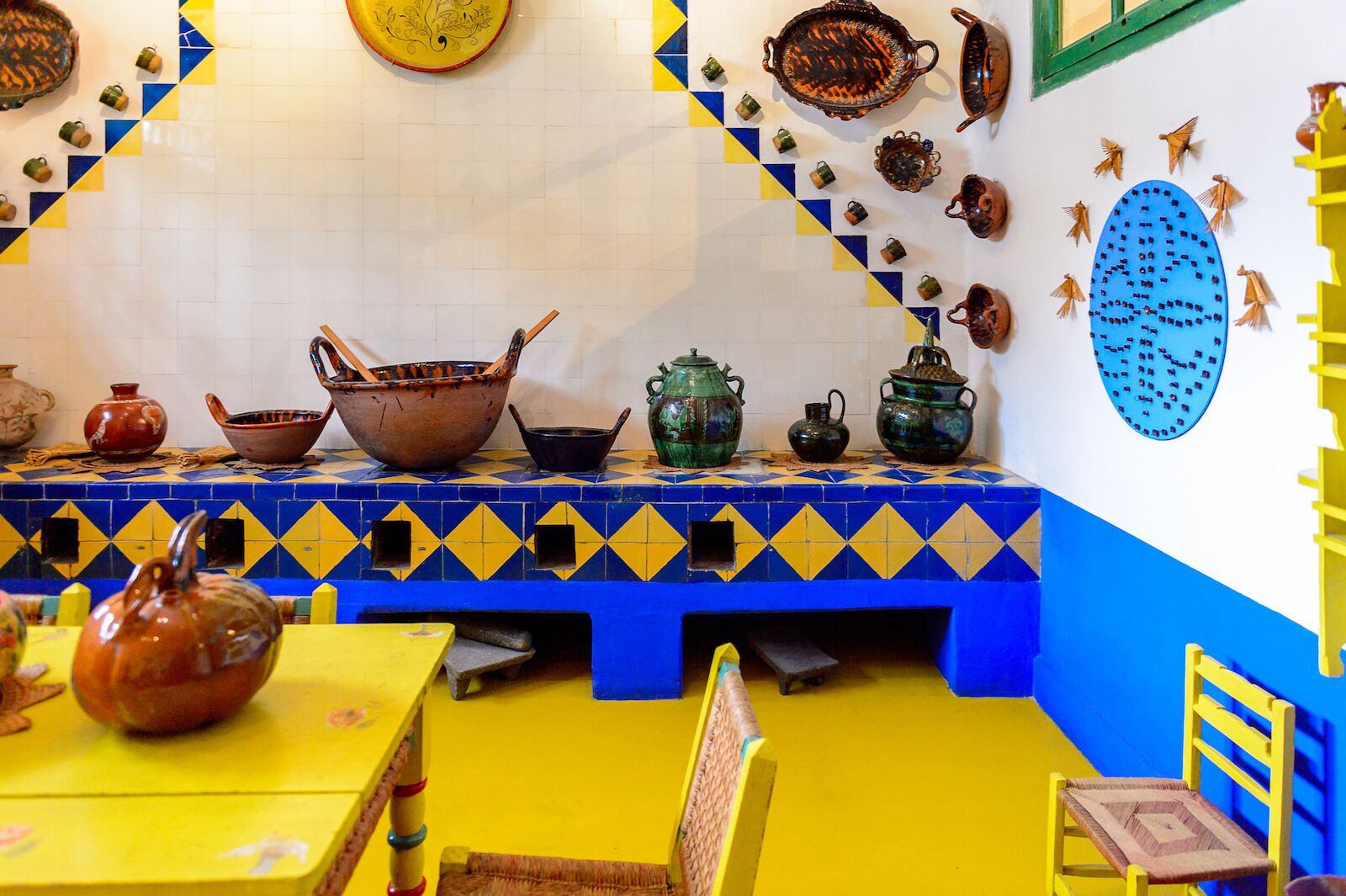
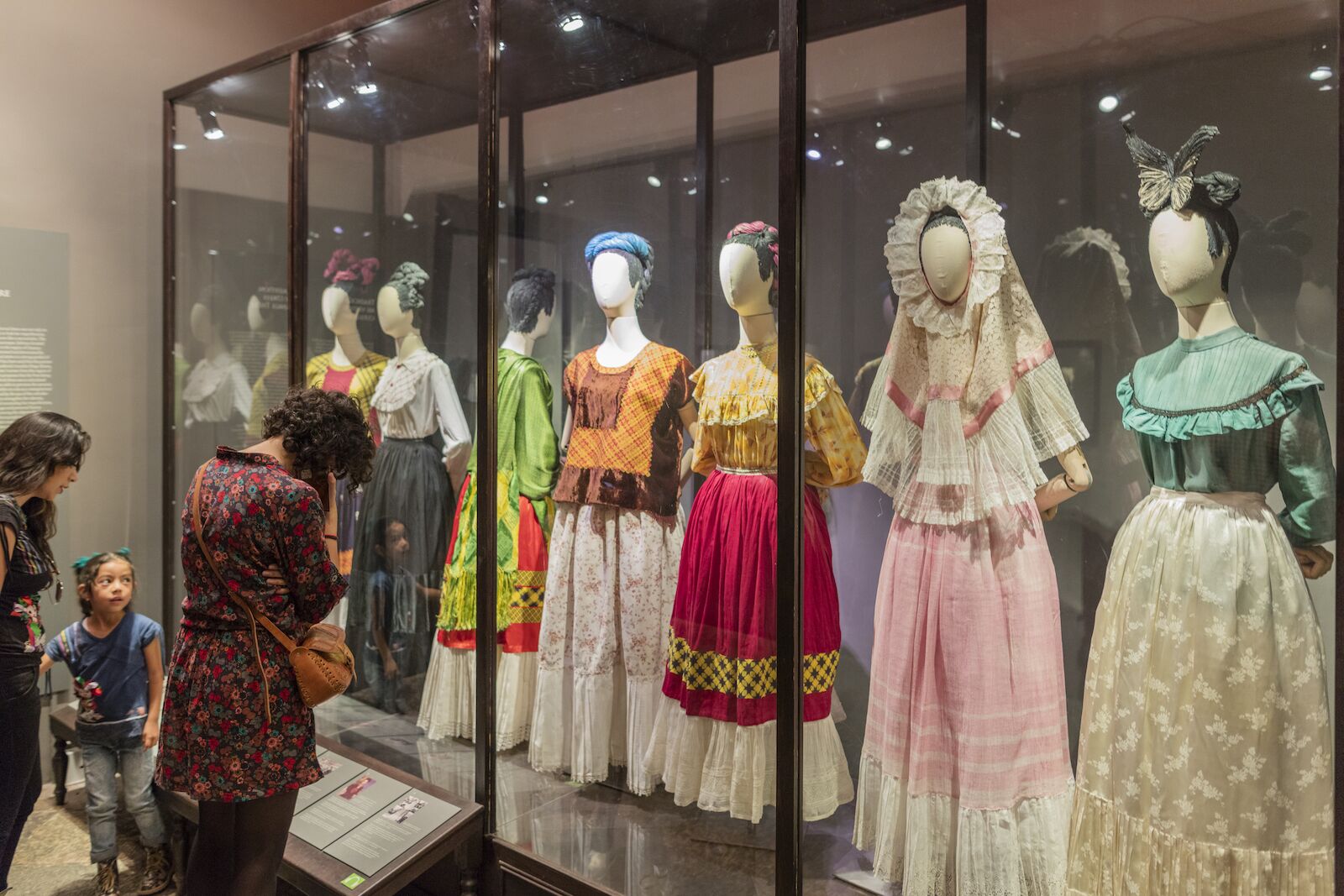
Plan to stay two hours at the Frida Kahlo Museum to take the time to look at all the objects and pieces on display. Make sure you arrive 15 to 20 minutes before the time displayed on your timed-entry ticket.
Why is the Frida Kahlo Museum famous?
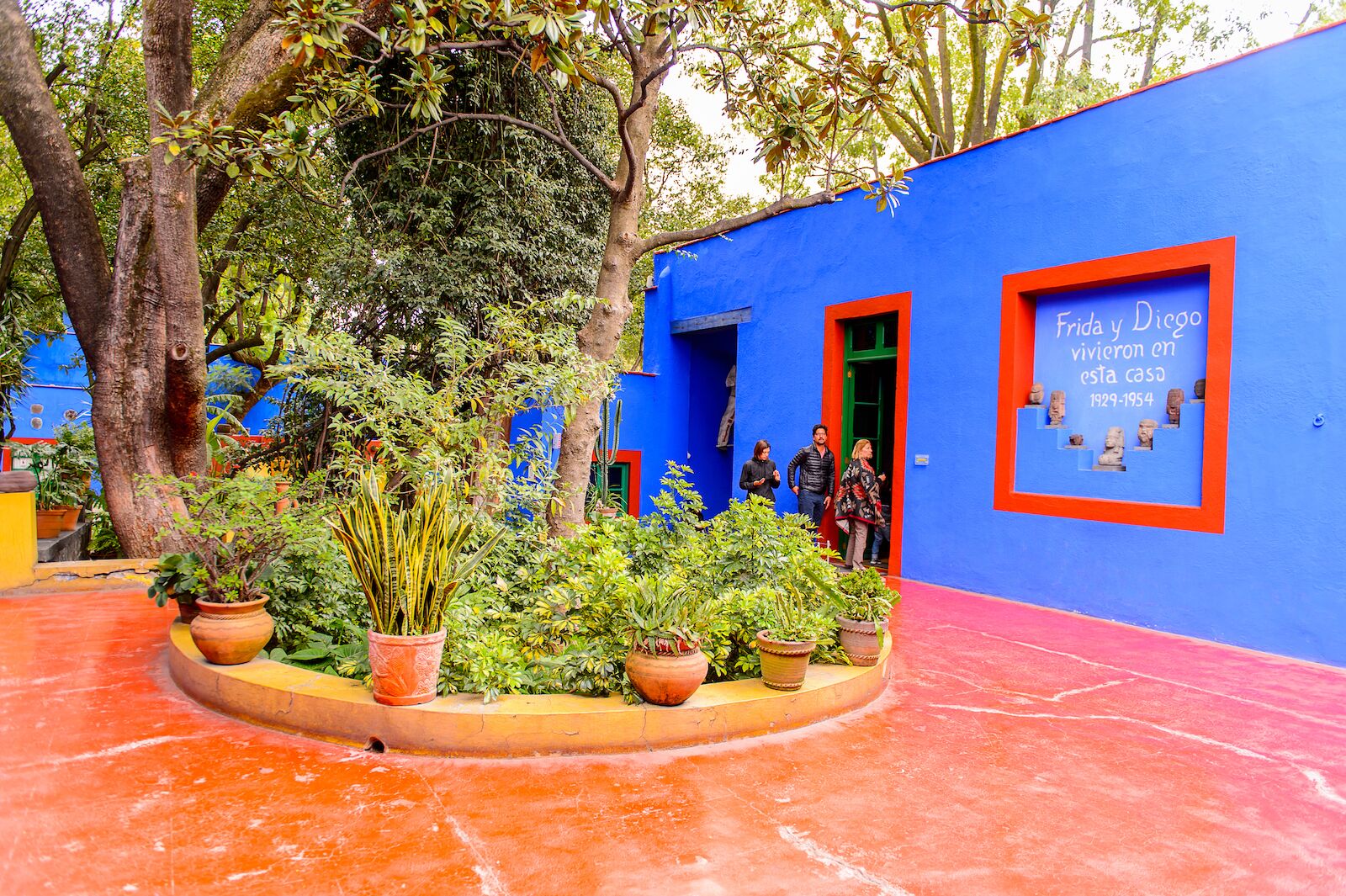
Photo: Anton_Ivanov/Shutterstock
Frida Kahlo is Mexico’s most famed artist, therefore La Casa Azul, the museum dedicated to her life and work, appeals to many, whether they are die-hard fans of Kahlo’s or interested in learning more about Mexico’s cultural heritage.
The fact that the Frida Kahlo Museum is the home where the artist was born, grew up, created, and died, adds to visitors’ interest. The collection contains much more than just paintings by Kahlo and Rivera: Many beautiful and personal objects, from books to jewelry, clothing, photographs, etc., are displayed.
Aside from the Frida Kahlo Museum, where can I see Frida Kahlo’s paintings in Mexico City?
La Casa Azul is not the only place in Mexico City where you can admire paintings by Frida Kahlo. The following cultural institutions are must-visits for fans of Kahlo’s work:
- Museo Dolores Olmedo, where you’ll see the largest collection of work by Kahlo and Rivera, such as “The Broken Column” and “Self Portrait with Small Monkey.” At the time of writing the museum is in the process of moving to the Parque Urbano Aztlán and will open to the public in 2024.
- Museo de Arte Moderno, where you can see “The Two Fridas” (1939), “The Coconuts” (1951), and “Still Life with Watermelons” (1953).
Hotels near the Frida Kahlo Museum in Mexico City
If you’d rather stay in a rental than a hotel while in CDMX, check out Matador’s selection of beautiful Airbnbs in Mexico City’s trendiest neighborhoods.
We hope you love the spaces and stays we recommend! Just so you know, Matador may collect a small commission from the links on this page if you decide to book a stay.
Ágata Hotel Boutique & Spa
The Ágata Hotel Boutique & Spa is located in the artsy and historical neighborhood of Coyoacán, and is an eight minutes’ walk away from the Frida Kahlo Museum. The property is luxurious, but remains simple in its decor and atmosphere to make guests feel comfortable and at home. There is a full-service spa offering massages, facials, aromatherapy, and more, and when you’re done with the mud baths and the body wraps, you can enjoy the hotel’s beautiful terrace. Breakfast is included with your stay, and, more surprisingly, so is your reading material — if the book you’re looking for isn’t available in the hotel’s library, they’ll lend you a Kindle so you can download what you want.
Casa Moctezuma
A nine-minute walk to the Frida Kahlo Museum, Casa Moctezuma is an aparthotel with free Wifi and free breakfast. Each apartment has a flat-screen TV with cable channels, a fully equipped kitchen, and premium bedding. There is a laundry facility on site, and furnished outdoor spaces where guests can relax. The 24-hour front desk and concierge services will help make your stay in Mexico City a breeze.
Casa Jacinta Guest House
Less than 10 minutes on foot from the Frida Kahlo Museum, Casa Jacinta Guest House is an affordable, colorful, and cozy option for travelers who like their accommodations with a touch of local flavor. With traditional textiles, tiles, furniture, as well as a terrace and a garden, this property feels like a welcoming private home — with the luxury of a 24-hour front desk, concierge services, and daily housekeeping.
